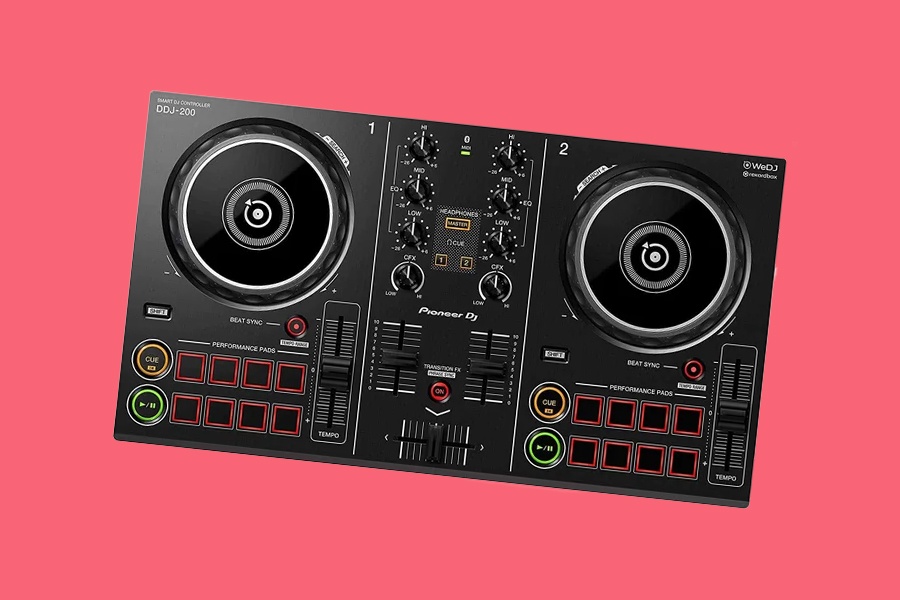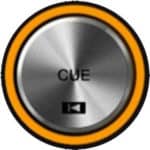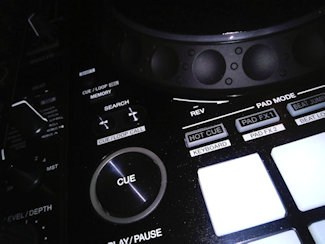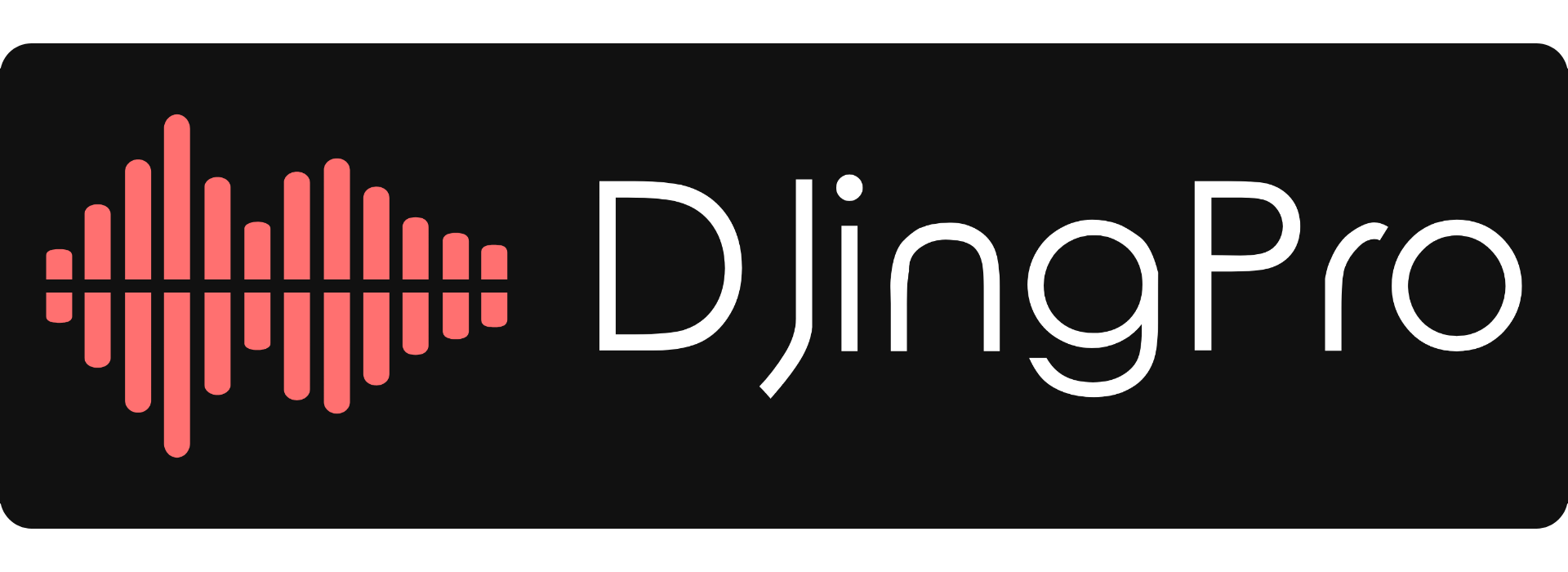When you buy your first set of multi-players or a DJ controller, there will be numerous functions to get to grips with. You’ll need to learn all about each function before you can correctly use them in your DJ sets. Today we’re focusing on cue points, how to use the cue button, and the difference between cue, and hot cue.

What are cue points?
The term cueing a record was born way back when DJ’s were using vinyl records and turntables. Vinyl records have a long quiet area at the beginning called the Lead-in Groove, this is where you drop the needle. It normally takes a few seconds to reach the first beat of the track, which is not good for DJing.
The aim was to hold the record right at the point of the first beat, this is the cue point. Then as soon as you let the record go, with the turntable already spinning, the music would begin. This is also known as slip cueing as the record would be slipping on the slipmat covering the platter.
Cueing was started by radio DJ’s that would need a track to begin instantaneously, and as soon as they’d finished talking. As soon as DJ mixing was born cueing became very important for getting tracks lined-up rhythmically. Tracks could be cued right at the first beat, or during any part of a record that a DJ wanted to mix in. So an eight minute record that takes four minutes to get to the exciting part could be shortened by cuing up at the three minute mark. This would keep the DJ’s set exciting and get rid of empty sounding long intros.
So in short a cue point is the exact point that you want your track to begin playing.

The cue button on modern equipment does exactly the same thing as DJ’s were doing with vinyl records. If you know how to cue a record, you’ll quickly learn how to use the cue button on modern equipment!
When you find the point of the track that you wish to start mixing from, you can set a cue point. It’s a little easier than it was with vinyl as you don’t have to patiently wait whilst holding the record. You simply set the cue point and when you’re ready to start the track, you press the cue button. Cue points are always set before you have mixed into the track you are cueing, and are generally start points. Many controllers, players, and software will let you set them at multiple points to give you many options.
All hardware and software varies but you generally set cue points with a simple press, or click of a button. Simply play the track until you reach the point that you want to save as a cue point, and then pause it, or hold it still with the jog wheel. You can then finely adjust it by using the jog wheel, or by dragging the track within your software.
Once the track is paused on the point that you want to set as your cue point, hit the cue button. This point will then be saved, every time you hit the cue button the track will jump back to the point that you chose.
If you press and hold the cue button the track will keep playing, but as soon as you let go it will jump back to cue. When you wish to keep the track playing simply press and hold play before you take your finger off cue. Or just hit play instead of cue!
What is cue tapping and why do people do it?
After setting a cue point many DJ’s will continuously tap at the button before eventually dropping the beat. This has always seemed like abuse of the button to me, but I can see why DJ’s do it. They are basically tapping to the beat so that when they drop the beat, the beats will be closely matched. This means that they have to do less adjusting with the jog wheels once the track is playing.
Cue Button Failure
I’ve discovered that it’s quite common for cue buttons to wear out and fail, I’d say cue tapping is the main cause. Once you’ve learned how to use the cue button you may find that you like to cue tap. If this is the case then tap away, it can definitely help. But don’t tap too hard and to the point that you’re actually pressing the button. Lightly tap your finger on the button until the main beat drop.. When the beat drops you can then press it fully, this means the button is only being pressed once.
If you have the quantize option on your hardware/software, this will snap your beats into alignment. This will remove the need for excessive cue tapping when the function is active, therefore prolonging the button’s life.
What is the difference between cue and hot cue?

Once you’ve learned how to use the cue button, you can start playing with the hot cues. This is something that was impossible with vinyl and turntables, and something that gives modern DJ’s endless creative possibilities.
The hot cue feature will give a DJ the ability to set cue points on the fly, while the track is being played out to the audience. You can also set them while planning your set for convenience. You’ll then save them so that they’re there when you need them in the mix.
Hot cues also differ from standard cue points as they’ll instantly begin playing when you press the button. This means you could hit the hot cue button to save a point of a track that’s getting the crowd super excited. Press it again to instantly jump back to that point to give the crowd another run of it.
Where to set hot cues?
DJ’s can get really creative by using the hot cues and there are so many good reasons to use them. Try setting various hot cues to indicate where the big drops are in a track, this is great for performance mixing. You can keep the beat rolling without having to pause for the breakdowns by setting hot cues at either side of the break.
How about setting hot cues at the start of short vocal shots within the track? You can then jump back and forth to create live remixes. This is kind of like using a sampler and dropping in short vocal hits. But instead of assigning samples you’re grabbing them from a track on the fly. This takes practice but when you get it right, it sounds awesome!
If you’re into scratching you could use hot cues to jump straight to the start point of scratch sounds. A single track may have seven sounds, so what happens when you wish to jump around these sounds? In the old days you’d be spinning your record quickly from sound to sound or re-positioning your needle. Using the hot cues you can set seven different points to jump straight to whichever sound you desire. Try getting creative by punching the hot cue pad repeatedly while slowly raising the volume to start the scratch routine. Devise your own unique and creative ways to include hot cues into your scratch routines, the crowd will love it!
Use hot cues to learn controllerism
Learning how to use the cue button and where to set cue points should be very simple. Using hot cues to create live remixes will take a bit more practice. Start off with a simple routine and repeat it until you have it mastered, then record it and listen back. When it sounds good slowly start adding more hot cues and multiple tracks to create mini performance mixes. This is the foundation of controllerism, but it’s all about practice and persistence to create perfection.
Controllerism and any type of cueing will rely on correct use of the headphones. For a full explanation on using DJ headphones go here -> show me how.
Final Thoughts
Good luck with cues and hot cues, I’m sure this article has helped. If you need and further help on how to use the cue button just comment below.
Another function on a DJ controller that you may need help with is the SHIFT button. If you’ve never used shift or if you don’t know what it does click > HERE.
If you’re new to DJing take a look at these –
Find out the best setup for your needs, a beginners guide > HERE
For the top beginner DJ tips read my essential guide > HERE
To transform your mixes using the EQ function of your mixer/controller check out THIS ARTICLE
And check out my definitive step by step guide to becoming a DJ HERE
